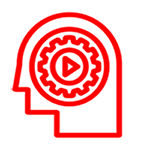Which of the Following is an Example of Behavior
Introduction:
Which of the Following is an Example of Behavior
Behavior is a captivating factor of life that incorporates an extensive range of moves, reactions, and responses exhibited by means of residing organisms. From the instinctual actions of animals to the complicated interactions of humans, conduct shapes our expertise of the arena round us. In this newsletter, we delve into the idea of conduct, exploring its definition, examples, significance, influencing elements, and programs.
Definition of Behavior
behavior alludes back to the activities or responses of a living being in response to upgrades from its environmental factors. It includes a broad range of exercises, along with actual moves, verbal articulations, and profound reactions.
Types of Behavior
Behavior can be categorized into various types based on its nature and origin. Two primary classifications include:
Animal Behavior:
Animals exhibit a wide array of behaviors vital for survival and addition to their environment. This consists of:
Instinctual Behavior:
Instinctual behavior is innate and intuition-driven, frequently observed in animals from the beginning. Examples encompass migration styles in birds and hunting strategies in predators.
Learned Behavior:
Learned behavior is received through revel in and interaction with the surroundings. Animals can adapt and regulate their actions based totally on past encounters, inclusive of schooling a canine to perform hints or teaching a hen to imitate human speech.
Human Behavior:
Human behavior encompasses the movements, mind, and emotions displayed by using individuals inside social contexts. It may be similarly divided into:
Social Behavior:
Social behavior relates to interactions between individuals or corporations within a society. This consists of communication, cooperation, and war resolution.
Psychological Behavior:
Psychological behavior specializes in the cognitive strategies underlying human movements, which includes decision-making, trouble-solving, and emotional regulation.
Examples of Behavior:
Animal Behavior:
Animals exhibit a various variety of behaviors formed by way of evolutionary pressures and environmental cues. For example, the mating dances of birds, the territorial shows of mammals, and the foraging behaviors of bugs are all examples of animal behavior.
Human Behavior:
Human behavior contains a myriad of movements prompted via cultural, social, and mental factors. From easy gestures like smiling or waving to complex behaviors like language acquisition and ethical reasoning, human behavior displays the complex workings of the thoughts and society.
Importance of Studying Behavior
Understanding way of behaving is significant for different disciplines, psychology, biology, sociology, and anthropology. It presents bits of knowledge into transformative strategies, social elements, and character contrasts, helping with the advancement of intercessions and methods for upgrading human prosperity.
Behavior in Different Contexts
Workplace Behavior:
Workplace behavior refers back to the moves and interactions of personnel inside organizational settings. It encompasses professionalism, teamwork, management, and battle resolution skills, all of which contribute to a fantastic paintings environment and improved productivity.
Educational Behavior:
Educational behavior encompasses the attitudes and moves of college students, teachers, and administrators within academic establishments. It consists of examine habits, study room participation, teaching methodologies, and educational overall performance, influencing the gaining knowledge of results and basic academic enjoy.
Factors Influencing Behavior
Behavior is influenced by a myriad of factors, including:
Biological Factors:
Biological factors including genetics, hormones, and neurological procedures play a sizeable role in shaping conduct. They have an impact on traits like temperament, personality, and predispositions to certain behaviors.
Environmental Factors:
Environmental factors together with upbringing, socialization, and publicity to stimuli effect conduct by using shaping person stories and perceptions of the world.
Sociocultural Factors:
Sociocultural factors such as societal norms, cultural values, and peer influences form conduct with the aid of offering frameworks for desirable conduct and social interactions.
Applications of Understanding Behavior
The insights gained from analyzing conduct have numerous sensible packages, together with:
Developing powerful interventions for behavioral disorders and mental fitness situations.
Designing instructional packages and interventions to promote advantageous behavior and gaining knowledge of outcomes.
Informing public guidelines and projects aimed at addressing societal troubles which includes crime, addiction, and social inequality.
FAQs For Which of the Following is an Example of Behavior
Q:What is behavior ?
A: Behavior refers to the movements or reactions of an organism in response to stimuli from its environment.
Q:Why is studying behavior critical?
A:Studying behavior is critical for understanding evolutionary methods, social dynamics, and person differences, leading to the development of interventions for improving human well-being.
Q: What elements have an effect on behavior?
A: Behavior is inspired by the aid of biological, environmental, and sociocultural factors, along with genetics, upbringing, societal norms, and cultural values.
Conclusion
All in all, behavior is a complex peculiarity that envelops a great many activities, responses, and reactions showed by living organic entities. By understanding the complexities of conduct, we gain important bits of knowledge into the activities of the brain, society, and the regular world. From creature senses to human communications, conduct shapes our encounters, impacts our choices, and characterizes our identity as people and as a species.

